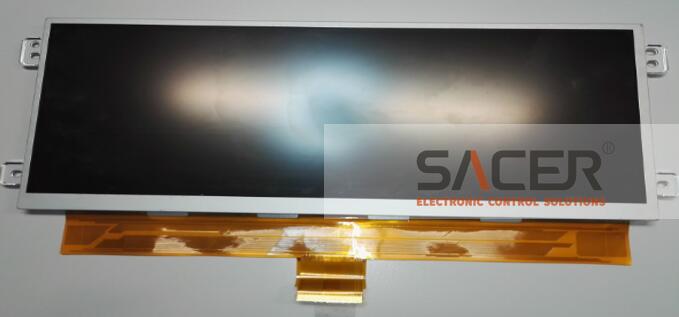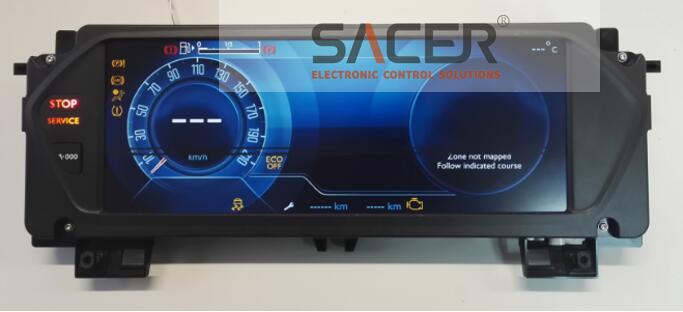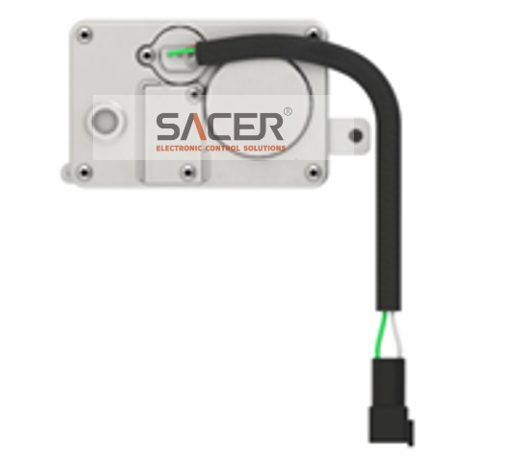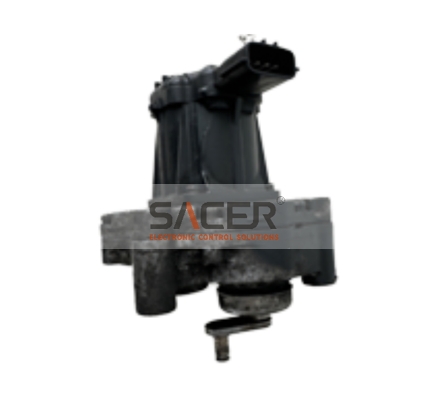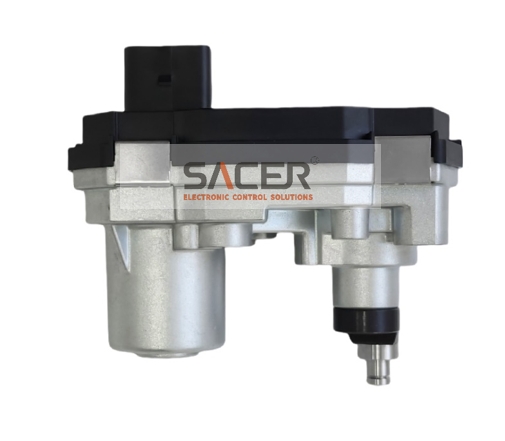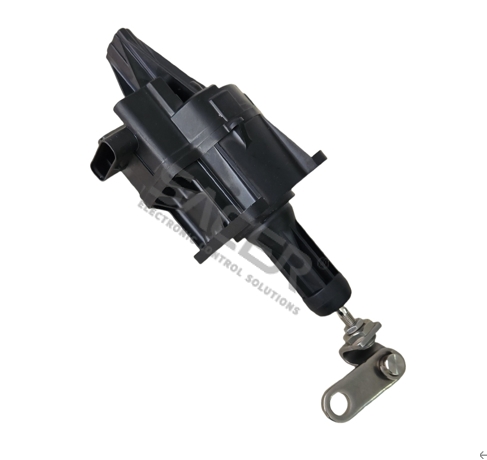The development of LCD (Liquid Crystal Display) screens for automotive dashboards has undergone significant progress, with a notable transition from TN (Twisted Nematic) screens to TFT (Thin-Film Transistor) screens.
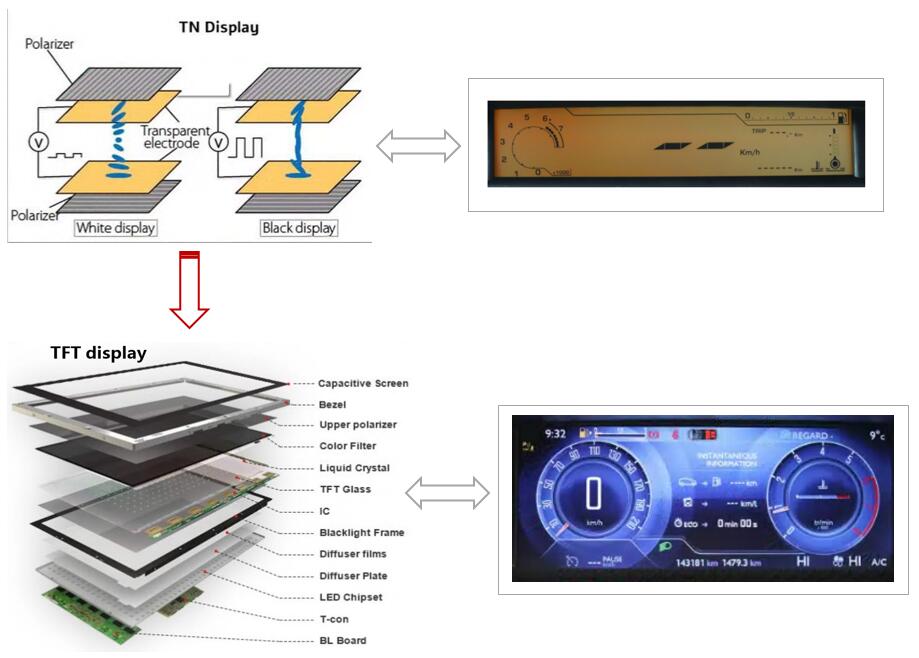
In the initial stages, TN screens were commonly used in automotive LCD displays. TN technology offered simplicity and cost-effectiveness in producing LCD panels. However, TN screens had limitations in terms of viewing angles and contrast, making it challenging to read the dashboard information under certain lighting conditions.
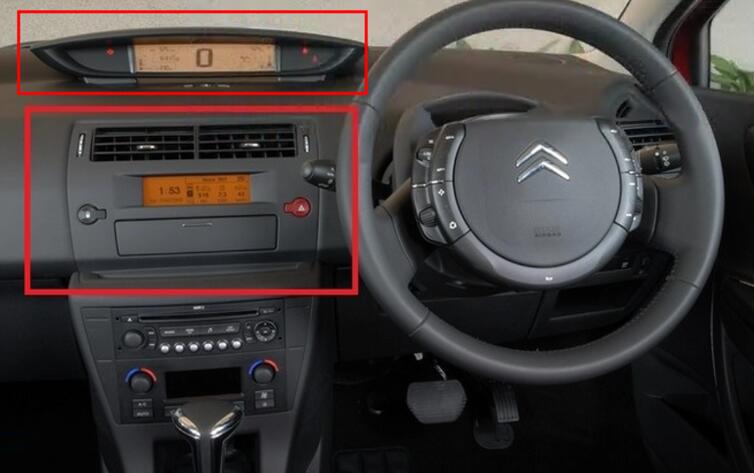
With the demand for improved display quality, TFT technology emerged as a significant advancement. TFT screens utilize a thin-film transistor for each pixel, enabling precise control over individual pixel states. This breakthrough revolutionized automotive displays by providing higher resolution, improved color reproduction, faster refresh rates, and wider viewing angles.
As automotive technology continues to advance, LCD displays have further evolved with additional improvements such as higher pixel densities, wider color gamuts, and curved screens. These advancements enhance the visual experience, readability, and overall functionality of automotive instrument clusters, providing drivers with clear and engaging information.
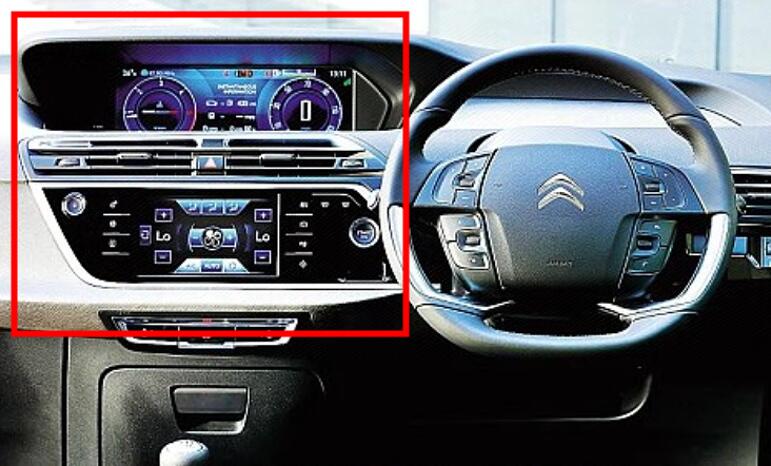
Nowadays the TFT (Thin-Film Transistor) screens have found extensive applications in automotive instrument clusters, revolutionizing the display technology in car dashboards. It would be the mainstream trend of automobile dashboard application in the future. SACER closely follows the pace of market demand and gradually carries out the research and development and production of TFT screen.
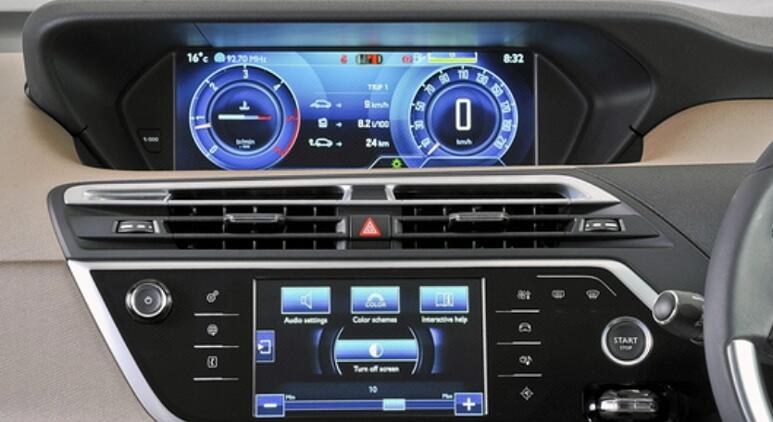
As below it is a TFT screen that SACER is developing and producing, which is applied in Citroen C4 Picasso (now called Space Tourer ) dashboards. This screen is said to be very popular in the European aftermarket especially in France. If you’re in the display repair/resell business, don’t hesitate to contact us for knowing about its
available date and our best offers.
